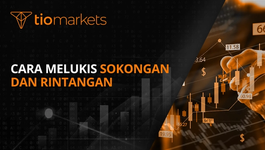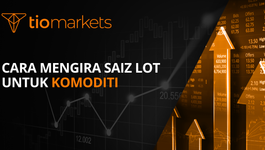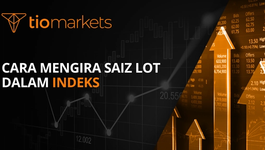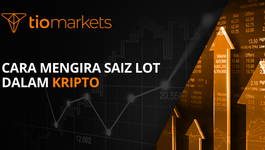Swing Trading vs Day Trading: What You Need to Know | TIOmarkets
BY TIOmarkets
|Jun 12, 2024Understanding the differences between swing trading and day trading is crucial for every trader aiming to tailor their strategy to their personal trading style and financial goals. Both approaches offer unique advantages and challenges, making them suitable for different types of traders. This article delves into the core aspects of swing trading and day trading, providing you with the knowledge you need to make an informed decision.
Introduction to Trading Styles
Before diving into the specifics of swing and day trading, it's important to grasp the fundamental concept of trading styles. These styles are defined by the duration of trades, the trader's engagement level, and the strategies employed to capitalize on market movements.
What is Swing Trading?
Swing trading is a strategy that focuses on capturing short- to medium-term gains in a stock (or any financial instrument) over a period of a few days to several weeks. Swing traders primarily use technical analysis due to the short-term nature of the trades, but they may also use fundamental analysis to enhance their strategy.
This trading style requires patience, as holding positions for several days or weeks means enduring fluctuations that can occur in the market. The goal is to achieve a higher return by catching the 'swing' in the market price.
What is Day Trading?
Day trading, on the other hand, involves buying and selling securities within the same trading day. Positions are closed out by the end of the day, ensuring that no position is held overnight. Day traders make profits by leveraging large amounts of capital to take advantage of small price movements in highly liquid stocks or currencies.
This style is fast-paced and requires a significant amount of time and attention, as traders need to monitor the markets and make quick decisions throughout the trading day.
Key Differences Between Swing Trading and Day Trading
While both trading styles aim to make profits through market movements, they differ significantly in approach, risk management, and lifestyle implications.
Time Commitment
Day trading demands a high level of attention throughout the trading day, making it more suitable for individuals who can dedicate their full time to trading. Swing trading, however, requires less daily screen time, allowing traders to maintain a regular job or other commitments alongside trading.
Risk and Reward
Day trading involves a higher frequency of trades, which can lead to significant profits but also increases the potential for losses. Swing trading allows for more time to analyze and make decisions, potentially leading to more calculated and less risky trades.
Capital Requirements
Due to the nature of day trading, with multiple transactions occurring in a single day, day traders typically require a larger amount of capital. Swing traders, with fewer transactions and longer holding periods, may be able to start with a smaller capital base.
Pros and Cons of Each Trading Style
Understanding the advantages and disadvantages of each trading style can help traders decide which approach aligns best with their goals, risk tolerance, and lifestyle.
Pros of Swing Trading
- Less time-consuming: Suitable for those with other commitments.
- Lower stress: Longer holding periods mean less pressure to act quickly.
- Capital efficiency: Potentially start with a smaller investment.
Cons of Swing Trading
- Overnight risk: Holding positions for days or weeks can expose traders to unexpected market movements.
- Requires patience: Not suitable for those looking for quick profits.
Pros of Day Trading
- Potential for quick profits: Frequent trades mean opportunities for fast gains.
- No overnight risk: Closing positions daily avoids the risk of significant overnight price movements.
- High level of control: Traders can quickly react to market changes.
Cons of Day Trading
- High stress: The need for constant monitoring and quick decision-making can be stressful.
- Capital intensive: Requires a significant amount of capital to effectively leverage small price movements.
- Time-consuming: Requires a full-time commitment.
Choosing the Right Trading Style for You
Deciding between swing trading and day trading ultimately comes down to your personal preferences, lifestyle, and financial goals. Consider your risk tolerance, the amount of time you can dedicate to trading, and your capital availability before making a decision.
Both trading styles offer pathways to profitability but require different strategies, mindsets, and commitments. Educating yourself on the nuances of each style is the first step towards becoming a successful trader.
At TIOmarkets, we provide the tools and resources needed for both swing and day traders to thrive. Explore our platform to discover how we can support your trading journey.
Psychological Factors in Trading
Trading is not just about numbers and charts; it also involves psychological factors that can significantly impact a trader's success. Emotions such as fear, greed, and overconfidence can lead to impulsive decisions and irrational behavior, ultimately affecting trading outcomes.
Successful traders often develop emotional discipline and mental resilience to navigate the ups and downs of the market. Techniques such as mindfulness, journaling, and visualization can help traders manage their emotions and maintain a rational mindset while trading.
The Role of Discipline
Discipline is a key trait that separates successful traders from unsuccessful ones. It involves sticking to a trading plan, following risk management strategies, and controlling emotions during both winning and losing trades. Developing discipline takes time and practice but is essential for long-term trading success.
Technical Analysis vs. Fundamental Analysis
Traders employ various analysis methods to make informed trading decisions. Technical analysis focuses on historical price data and chart patterns to predict future price movements. On the other hand, fundamental analysis involves evaluating the intrinsic value of an asset based on economic, financial, and qualitative factors.
While some traders prefer technical analysis for its focus on price action and trends, others favor fundamental analysis for its insights into the underlying value of an asset. Combining both approaches can provide a comprehensive view of the market and enhance decision-making.
Technical Analysis Tools
Technical analysts use a range of tools and indicators to analyze price charts and identify potential trading opportunities. Common tools include moving averages, support and resistance levels, and oscillators like the Relative Strength Index (RSI) and Moving Average Convergence Divergence (MACD).
These tools help traders spot trends, confirm market reversals, and set entry and exit points for trades. Understanding how to use technical analysis tools effectively can improve trading accuracy and profitability.
Fundamental Analysis Factors
Fundamental analysts assess a company's financial health, industry trends, macroeconomic indicators, and geopolitical events to determine the intrinsic value of an asset. Factors such as earnings reports, economic data releases, and central bank policies can significantly impact asset prices.
By conducting thorough fundamental analysis, traders can make more informed decisions about the long-term prospects of an asset and its potential for growth or decline. Fundamental analysis is particularly valuable for investors looking to hold positions for an extended period.
Risk Management Strategies
Effective risk management is essential for preserving capital and achieving long-term success in trading. Traders employ various strategies to mitigate risks and protect their investments from unexpected market movements.
Position Sizing
Position sizing involves determining the amount of capital to risk on each trade based on factors such as account size, risk tolerance, and the probability of success. By sizing positions appropriately, traders can limit potential losses and avoid significant drawdowns in their trading accounts.
Stop-Loss Orders
Stop-loss orders are tools used by traders to automatically close a position at a predetermined price level. This helps limit losses and prevent emotional decision-making during volatile market conditions. Setting stop-loss orders is a common risk management practice among traders of all experience levels.
Diversification
Diversification is a risk management strategy that involves spreading investments across different assets, industries, or markets. By diversifying their portfolios, traders can reduce the impact of adverse events on any single position and potentially improve overall risk-adjusted returns.
Risk-Reward Ratio
The risk-reward ratio is a metric used by traders to assess the potential return on investment relative to the risk taken on a trade. By aiming for a favorable risk-reward ratio, traders seek to maximize profits while minimizing potential losses. Maintaining a positive risk-reward ratio is a key aspect of effective risk management.
Conclusion
Swing trading and day trading are two popular trading styles that cater to different preferences and trading goals. By understanding the nuances of each style, traders can choose the approach that best aligns with their risk tolerance, time commitment, and financial objectives.
Regardless of whether you opt for swing trading or day trading, developing a solid trading plan, implementing effective risk management strategies, and continuously educating yourself about the markets are essential steps towards achieving success as a trader.
At TIOmarkets, we are committed to providing traders with the tools, resources, and support they need to navigate the financial markets successfully. Explore our platform today to discover how we can help you on your trading journey.
Start Your Trading Journey with TIOmarkets
Ready to put your trading knowledge into action? Join the 170,000+ traders in over 170 countries who have chosen TIOmarkets as their trusted partner. Whether you're inclined towards the fast-paced world of day trading or the strategic realm of swing trading, our top-rated platform offers over 300 instruments across 5 markets, ensuring you have the diversity and flexibility to execute your trades with low fees. Take advantage of our comprehensive educational resources to sharpen your skills. Create a Trading Account today and embark on a successful trading journey!

Risk disclaimer: CFDs are complex instruments and come with a high risk of losing money rapidly due to leverage. You should consider whether you understand how CFDs work and whether you can afford to take the high risk of losing your money. Never deposit more than you are prepared to lose. Professional client’s losses can exceed their deposit. Please see our risk warning policy and seek independent professional advice if you do not fully understand. This information is not directed or intended for distribution to or use by residents of certain countries/jurisdictions including, but not limited to, USA & OFAC. The Company holds the right to alter the aforementioned list of countries at its own discretion.
Join us on social media

Behind every blog post lies the combined experience of the people working at TIOmarkets. We are a team of dedicated industry professionals and financial markets enthusiasts committed to providing you with trading education and financial markets commentary. Our goal is to help empower you with the knowledge you need to trade in the markets effectively.





